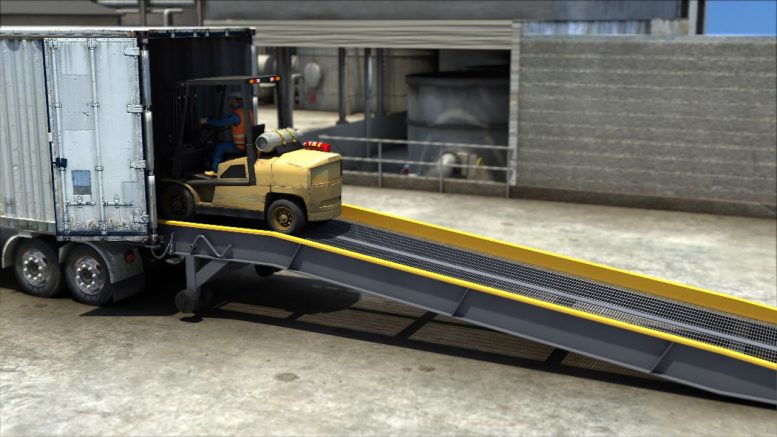The loading and unloading of heavy machinery onto trailers can be safe and easy, provided that you follow the appropriate steps. If you fail to take the appropriate precautions, then it can indeed be a difficult and incredibly dangerous process. Thus, if you’d like to be able to work without any issues or accidental damage to property, then you should have a read of these simple steps.
1 – Ensure that the ramp is secure before use
This is a case of double checking, and then checking again. Most high-quality trailer ramps will come various attachments that allow you to secure the ramp to your trailer effectively. When you buy a new ramp, familiarise yourself with these attachments and follow the instructions carefully. Never assume that the attachments will be the same as your previous trailer. If it is a new ramp, study it well before use.
Then of course, when attaching the ramp to the trailer, double check the attachments and secure any safety straps of chains before use. You could even take a moment to stand on the ramp and get a feel for the balance and security before pressing forward. By doing this you can ensure that the straps have been secured properly and that there is nothing that may hinder the loading process.
2 – Always keep a low incline with a long clearing
It’s physics 101: the lower the gradient, the easier it will be to load your machinery onto the ramp. So, give as much room as possible for the loading process and allow the ramps to stretch out on a lower gradient. By doing so, you’ll not only be making it much easier to load, but if using heavy machinery such as an excavator, less throttle will be required.
If for whatever reason you are left with very little room for the loading process, then endeavour to park your trailer in as low a spot as possible, whilst similarly ensuring that the ground is flat enough. If in the event that you are unable to find a low spot and there is very little room to manoeuvre, don’t try to load the trailer alone. Find help and use whatever you can (i.e., support straps) to aid in the loading process.
3 – Get a big enough ramp
This might sound a little silly, however, it is important that you have a large enough ramp to accommodate the various loads that you will need to put onto your trailer. The ramps must be larger than the load itself, otherwise you will run into all sorts of issues. There are plenty of high quality trailer ramps available on the market, so do your research and choose wisely.
4 – Clean your ramp before & after
Keeping your ramp clean and free of debris is the key to maintaining health & safety at all times. Before using the ramp, give it a once over with a cloth to ensure that there are no wet spots or any unnecessary debris such as stones jutting out. If you do this, you can avoid injury and damage to property—the last thing you need is a heavy excavator sliding off the side of the ramp because there was an oil spillage on the side that could have been removed. Once the loading process is complete, then your detaching them and putting them away, give them another once over with a cloth ready for next time.
5 – A bad idea is never a good idea
Again, it sounds like we’re teaching you to suck eggs, but we’ve all made a mistake before where we think to ourselves: “hmm, this probably isn’t going to go very well,” – and yet we follow through with it anyway. If for whatever reason you have any doubt about the loading process, then it’s a terrible idea. Regroup and find a different approach that you are confident in. Seek out assistance and deploy common sense at all times.
6 – Communication is essential
Communicating with whomever is driving the heavy machinery up onto the trailer, should be communicating with a spotter at the same time. Whilst they’re lining up and checking their blind spots, the other person assisting should be doing the same. Keeping an open line of communication with the appropriate hand signals and gestures will go a long way towards preventing disaster.
7 – Wear appropriate PPE
Personal protective equipment should be a given. Steel toe cap boots, goggles and heavy-duty gloves will keep you safe from injury during the loading procedure. Goggles may seem like overkill, but it’s not uncommon for debris to be hiding in the tracks of a heavy vehicle, which could potentially fly off when throttling up the ramp catching someone in the eye. Always be prepared for the worst! Provided you follow these simple steps however, you should be perfectly safe.



Be the first to comment on "How to Use Trailer Ramps Safely and Effectively"